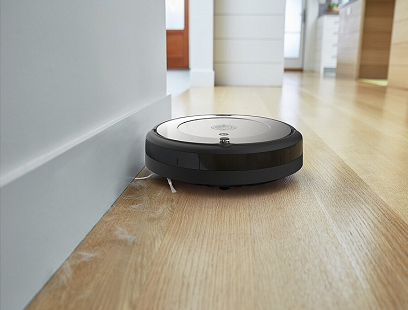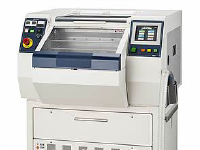
People’s ability to assemble tiny constituent parts is becoming more difficult as electrical components become smaller. Humans struggle to perceive and manipulate the extremely microscopic components that make up modern equipment, making modern assembly ideal candidates for robotics. Infiltration of dust from robots and other equipment, on the other hand, could harm electronics during production. Manufacturers utilise an unique class of robots developed for usage in clean rooms to solve this problem. These robots are called clean room robots. With the increasing demand for robotic assembly and operation, the demand for clean room robots is on the rise.
In clean room robots, particle dispersal is the most critical concern. There is a fundamental shift in a robot’s architecture as well as the way it interacts with its surroundings in order to prepare it for clean room applications.
For electronic assembly and other uses, a clean room is a special subset of robots. Special features are built into the robots to prevent them from becoming a source of contamination. Robots shed particulates from belts, gases from hoses and cables, and dust particles from end effector movement, much like any other mechanism. All of these things can contaminate sensitive electronics like hard disc drives and semiconductors. Clean room robots are specially designed to shed no residue in their environment. Given below are some instances of the best clean room robots in operation.
According to Reports and Data, the clean room robot market size is expected to reach USD 12.06 billion by 2028, registering a massive 12.1% CAGR over the forecast period. The pandemic, the increased need for automation and the need for medical device production ill certainly drive demand in the market. But the market will be able to cope up with this increased demand thanks to continuous innovation in the clean room robotics space.
Fanuc: Robots Are Making More Robots
In a year marked by the COVID-19 issue, robots have provided workday predictability, which has fueled demand, as well as insulated production schedules for OEM Fanuc, where robots continue to create the next generation without interruption. With 10 robots for every human at Fanuc’s manufacturing facility, the Japanese company churns out 1,000 robots a month. The pandemic has kept them busy, with robust demand for automation.
Cobots and vision systems robots have been particularly popular among health-care-parts producers. Manufacturers can use them to boost or speed up production, obtain more precision, and spread out their personnel to meet physical-distance needs.
ESS Technologies, a systems integrator that works with Fanuc, has noticed interest in robotics from makers of COVID-19-fighting equipment. Fanuc has therefore built automated test-kit assembly systems that use robotics to build test tubes fitted with swabs and reagents, as well as filling and plugging test kit vials. Fanuc robots and cobots can handle a wide range of upstream and downstream tasks, such as labelling, trimming, de-gating, and packaging.
For a long time, robots have been conducting those kinds of tasks right around the press. They’ve also been involved in the assembly of medical devices ranging from inhalers to respirators. Manufacturers have been able to quickly adopt automation because to cobots, which are less expensive than robots. They don’t require as much room or security as robots, and they can adapt to a range of activities.
Sure, COVID sparked a distinct transition, where not only were there demands, but also stronger demand for particular types of products. Manufacturers were struggling to fulfil tremendous demand, and they needed to be able to automate in order to do so. When that surge in demand is combined with the issues of social distancing, it creates a pressing need for manufacturers to use robotics and other forms of automation to deal with the one-two punch.
Sepro: Clean Room Robots for Medical Industry
Sepro, the renowned manufacturer of Cartesian robots, recently launched its new MED range is designed for use in sterile environments. With a new series of three-, five-, and six-axis robots, Sepro is targeting injection moulding clean rooms in the medical and pharmaceutical industries. The design and operating qualities of the MED-series robots assure clean operation, precision, and productivity.
According to Sepro, their robots boost productivity and streamline workflows. These robots may be employed across the whole manufacturing line in the clean-room sector, from assembly to inspection, traceability, and packing. All linear guiding surfaces and gears on MED-series robots are lubricated with FDA-approved lubricants, which are contained so that they do not contaminate the moulding region.
Corrosion protection is standard on components that come into contact with the moulded parts, such as end-of-arm-tooling (EOAT). According to the business, the EOAT can be built from clean materials such as anodized aluminium, stainless steel, or polyoxymethylene, depending on the requirements of a certain clean room.
NuTec Tooling Systems: Clean Room Robots For Syringe Manufacturing
NuTec Tooling Systems, a custom automation solutions provider, has created a syringe coating system for a pharmaceutical original equipment manufacturer that incorporates four Epson Robots Cleanroom SCARA robots.
The robots are used at various stations throughout the machine to automate the customer’s syringe manufacturing process in a precise, efficient, and cost-effective manner.
The project’s idea phase began in 2018, and the machine was ready for usage in November 2020, allowing the OEM to collaborate with government agencies at a key time to develop a cost-effective technique for mass-producing syringes to battle Covid-19.
NuTec was approached by an OEM customer to design a new equipment to automate syringe manufacturing utilising a proprietary coating process that offers plastic syringes glass-like qualities.
The OEM’s competitors used to make syringes out of glass, which is more expensive than plastic. The procedure, especially when automated, aids in cost reduction and allows for large production.
ABB: Small Robots Big Loads
The ISO 4 clean-room version of ABB’s IRB 1300 six-axis industrial robot, has been developed to be use in plastics facilities supplying the medical and pharmaceutical sectors. The IRB 1300 is a rapid, small robot that can lift big objects or loads with complicated and irregular shapes, according to the firm.
New features in the clean-room model allow it to be employed in contamination-free production processes. It’s painted with chemical-resistant paint that doesn’t break down when exposed to antibacterial cleaning solutions, for example.
Furthermore, the robot’s design reduces the amount of holes through which germs can grow. It features a particle filter and is completely sealed to keep grease, oil, and particles away from the goods it works with.


















